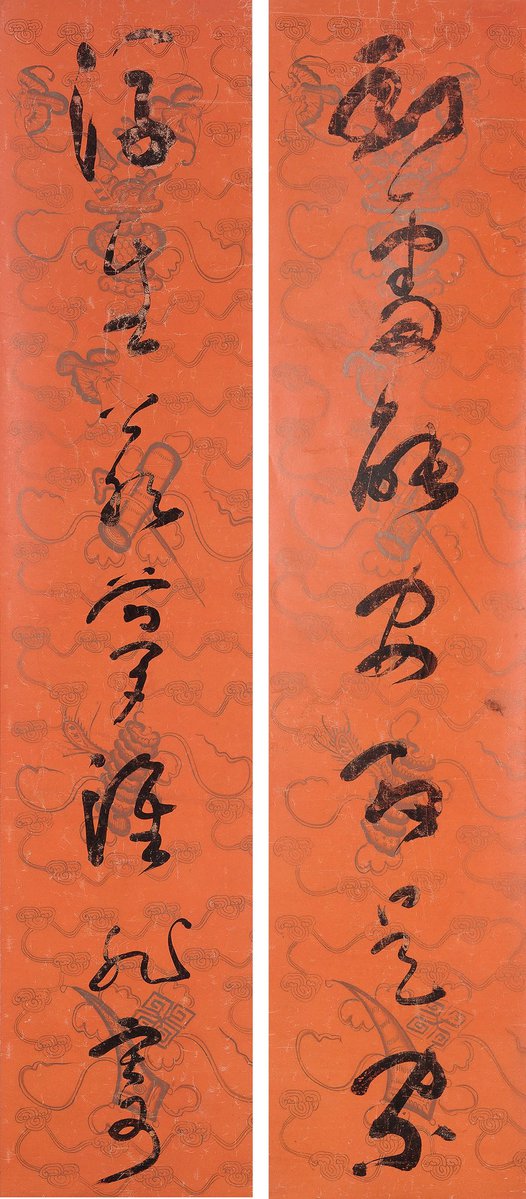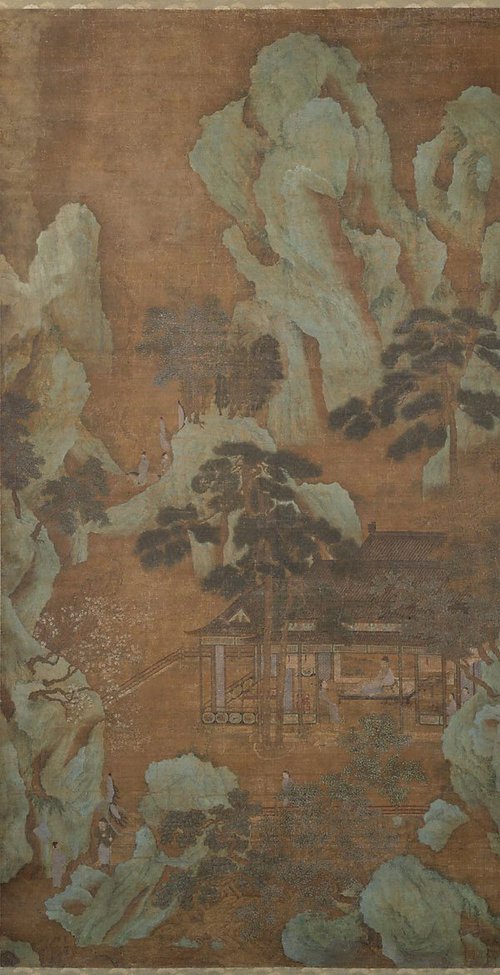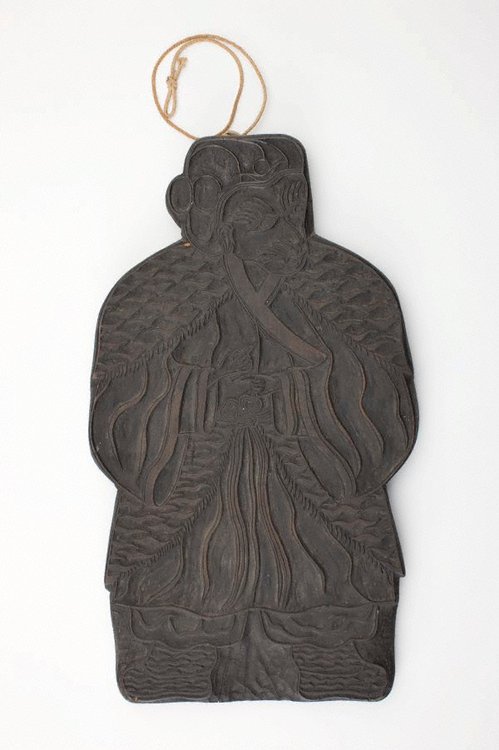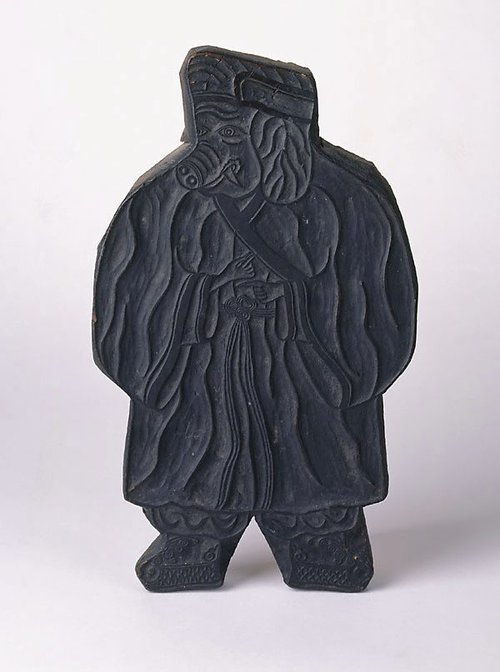

-
Details
- Place where the work was made
-
China
- Date
- circa 19th century
- Media categories
- Scroll , Calligraphy
- Materials used
- pair of hanging scrolls; ink on paper
- Dimensions
-
a - right scroll, 1651 x 355 cm, image
a - right scroll, 202.3 x 41.8 cm, scroll
b - left scroll, 1651 x 355 cm, image
b - left scroll, 202.3 x 41.8 cm, scroll
- Signature & date
Not Signed, not dated.
- Credit
- Gift of Dr. James Hayes 2003
- Location
- Not on display
- Accession number
- 312.2003.a-b
- Copyright
- Artist information
-
Unknown
Works in the collection
- Share
-
-
About
‘The floating life resembles a dream; who is not a sojourner?
Thus everywhere would be home if one could settle.’These lines may be one of the most encountered couplets in Chinese Buddhist temples. They are seen, for instance, at Tuixingan Nunnery in West Lake, Hangzhou; at Ziguosi Temple in Fuding, Fujian; and at the Tianningsi Temple in Leizhou, Guangdong. The popularity of the couplet demonstrates the firm hold in the minds of Chinese Buddhist adepts, that reality is fantasy and illusion and that life is a dream. The idea thrived in part because it found further philosophical support in Daoism. The Daoists believed that there is no definitive dividing line between reality and dream. What one considered real is often precariously dream-like. In ‘Zhuangzi’, the author recounts that he once dreamt himself to be a fluttering butterfly. When he woke up, he stumbled on whether he had dreamt he was a butterfly or a butterfly had dreamed he was Zhuangzi! Therefore, the acceptance that life is a dream is considered enlightenment, allowing people to free themselves from the ordinary cares of being.
The couplet, written by an anonymous calligrapher in unrestrained cursive script, is a perfect example of Chinese calligraphic art that reaches a harmonious balance between form and content.
‘The Poetic Mandarin: Chinese Calligraphy from the James Hayes Collection’. pg.140.
© 2005 Art Gallery of New South WalesThe couplet, written on two narrow pieces of paper or silk, and hung either side of a large painting or doorway, is one of the most common forms of calligraphic art and has a long standing history in China. They first appeared in the Five Dynasties period (907-979) as pairs of plaques, carved after written master copies, to decorate architectural columns, courtyards and garden doorways. Couplets for indoor display, written on paper or silk, came into existence in the 17th century and gained great popularity in the Qing dynasty. The couplets themselves are either taken from classical poetry or contemporary literary works composed by the calligraphers themselves and their friends. A couplet is made up of two parts called the head and the tail. The two lines of verse are antithetically parallel. Formerly it was a very common practice to send them to friends or relations on such occasions as marriages and birthdays, or as condolences to families of deceased persons.
Asian Art Department, AGNSW, August 2003.
-
Places
Where the work was made
China
-
Exhibition history
Shown in 1 exhibition
The poetic mandarin: Chinese calligraphy from the James Hayes collection, Art Gallery of New South Wales, Sydney, 23 Sep 2005–27 Nov 2005
-
Bibliography
Referenced in 1 publication
-
LIU Yang, The poetic mandarin: Chinese calligraphy from the James Hayes collection, Sydney, 2005, 140, 141 (illus.). cat.no. 47. In the catalogue this work has been given the incorrect accession number. The correct accession number is 312.2003.a-b
-




